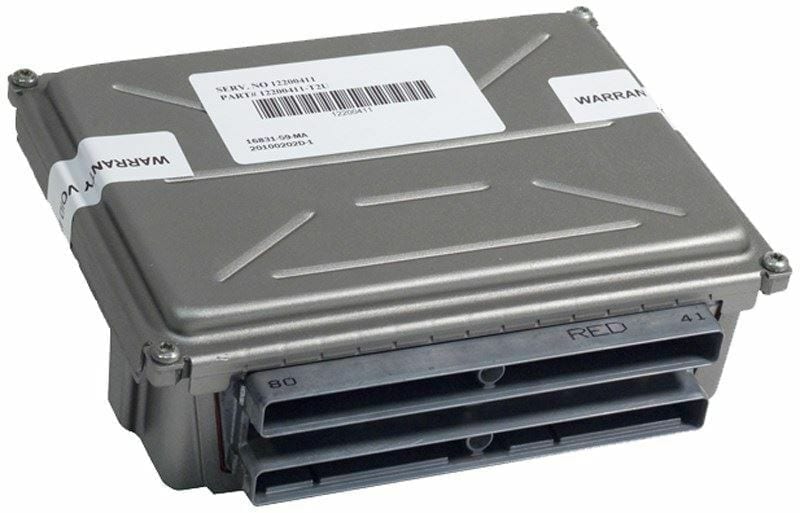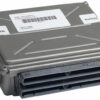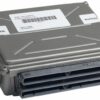Is Your GM Truck or Van Plagued by Mysterious Issues?
If you’re dealing with a persistent check engine light, erratic engine performance, or strange transmission behavior in your early 2000s GM vehicle, the root cause might be the very brain of its operation: the Powertrain Control Module (PCM). This component is the central command center, managing everything from fuel injection and ignition timing to transmission shift points and emissions controls. When it begins to fail, it can create a cascade of frustrating and often misdiagnosed problems. This isn’t just a part; it’s the solution to restoring your vehicle’s reliability and performance.
The Solution: A VIN-Programmed GM PCM 12200411
Don’t settle for a generic, unprogrammed module from a salvage yard that could create more problems than it solves. This Powertrain Control Module is a direct-fit replacement for a vast range of GM vehicles, including the popular Silverado, Sierra, Tahoe, Yukon, and Express/Savana vans. The most critical feature is that we program it specifically for your vehicle using your VIN before it ships. This process ensures that the module has the correct software and calibrations for your engine, transmission, and specific options, including the latest updates from General Motors. This eliminates compatibility issues and the need for expensive dealer programming, making the installation process as smooth as possible.
Common Symptoms of a Failing PCM
- ✔ Check Engine Light: A constant or flashing Check Engine Light (CEL) is the most common sign. You may see codes related to module communication (U-codes), sensor circuits, or general performance issues.
- ✔ Erratic Engine Behavior: Unexplained stalling, rough idling, hesitation during acceleration, and engine misfires can all point to a faulty PCM.
- ✔ Poor Transmission Function: If your transmission is shifting harshly, late, or not at all, the PCM may be failing to send the correct signals to the transmission solenoids.
- ✔ No-Start Condition: The engine may crank over but refuse to start. This can happen if the PCM is not properly firing the fuel injectors or ignition coils.
- ✔ Decreased Fuel Economy: A failing module can’t efficiently manage the engine’s fuel-to-air ratio, leading to a noticeable drop in MPG.
- ✔ Failed Emissions Test: Incorrect engine management will almost certainly cause your vehicle to fail a smog or emissions inspection.
- ✔ Intermittent Electrical Problems: Since the PCM communicates with many other modules, its failure can sometimes cause seemingly unrelated electrical gremlins.
Why Choose a Pre-Programmed Module?
Getting a PCM that is already flashed to your VIN is the smartest way to handle this repair. It saves you a trip to the dealership and the high cost of their programming services. We handle the complex part, so you receive a component that is ready for installation. Once installed, you may need to perform a simple security relearn procedure (often called a CASE relearn), which can typically be done with a capable bidirectional scan tool or by following a specific key-cycle procedure. This ensures your vehicle’s anti-theft system recognizes the new module. By providing us with your VIN at checkout, you guarantee a module that is perfectly matched to your vehicle’s factory specifications.
Frequently Asked Questions
Is this PCM considered plug-and-play?
Almost. It comes pre-programmed to your VIN, which handles 90% of the work. However, on most GM vehicles, you will need to perform a security relearn procedure so the vehicle’s anti-theft system recognizes the new module. This often requires a capable scan tool or a specific key-on/off procedure.
What is a VIN and why do you need it?
The VIN (Vehicle Identification Number) is a unique 17-digit code for your specific vehicle. It contains information about the make, model, year, engine, transmission, and other factory-installed options. We use the VIN to load the exact GM-certified software and calibrations onto the PCM, ensuring perfect compatibility.
Will this part fix my check engine light?
If the check engine light and associated codes are being caused by a faulty PCM, then yes, this part will resolve the issue. It’s crucial to have a proper diagnosis to confirm the PCM is the point of failure and not a separate sensor or wiring problem.
What’s the difference between a PCM, ECM, and ECU?
The terms are often used interchangeably. ECM (Engine Control Module) typically just controls the engine. ECU (Electronic Control Unit) is a generic term. PCM (Powertrain Control Module) is the most accurate term for this part, as it controls both the engine and the transmission functions.
Where is this module located on my vehicle?
The location varies. On most Silverado, Sierra, Tahoe, and Yukon models, it’s located in the engine bay, on the driver’s side, often under or near the battery tray. On Express and Savana vans, it’s typically in the LH rear of the engine compartment. Always consult a repair manual for your specific vehicle.


